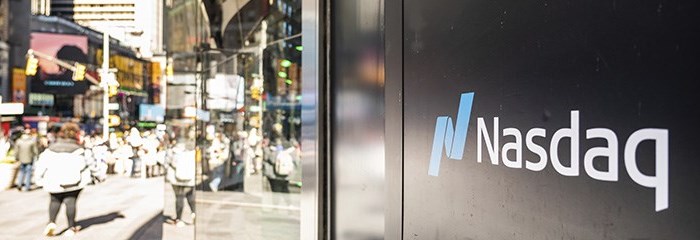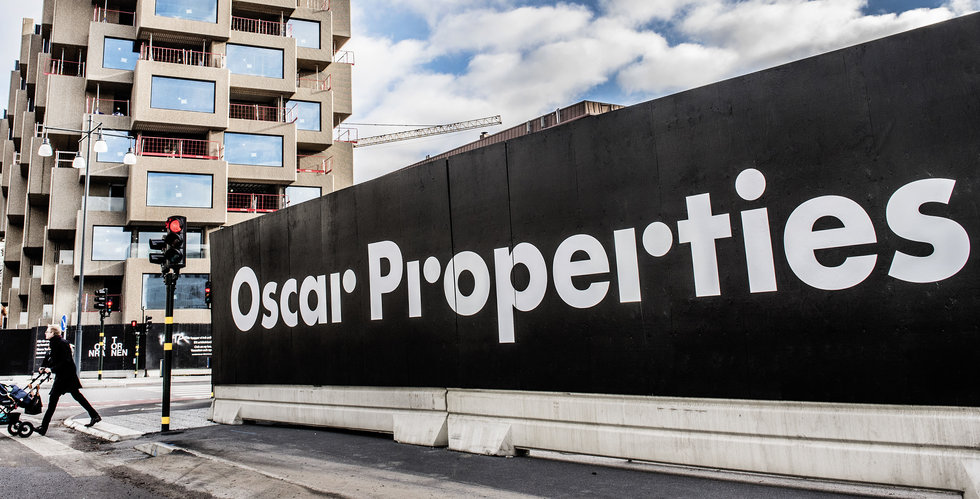
Analyst Note | Oct 09, 2020
We have lowered our Swedish Orphan Biovitrum fair value estimate to SEK 190 from SEK 207 following the disappointing results for avatrombopag (Doptelet) in chemotherapy-induced thrombocytopenia. Patients taking the medication did not see significantly fewer platelet transfusions, or fewer reductions or delays in chemotherapy, due to thrombocytopenia (the composite primary endpoint) relative to patients in the placebo arm. Although SOBI attributes this failure to an unexpectedly strong performance for placebo patients, this is still a setback for the drug in one of its largest market opportunities, and we have lowered our peak sales assumptions for the drug to $300 million from $700 million. Most of our sales forecast now stems from approval in ITP (approved in the U.S., filed in Europe). We continue to view SOBI's franchise as lacking an economic moat, despite current strong sales for the firm's hemophilia therapies Elocta and Alprolix, and this setback reduces SOBI's ability to diversify its product revenue away from hemophilia therapies, which are vulnerable to competition from Roche's Hemlibra (approved) as well as RNA-based and gene therapies in development. SOBI also saw disappointing data for gout therapy SEL-212 relative to standard of care Krystexxa in a phase 2 trial in September, leading us to question the decision to push forward into phase 3 studies and whether the drug has the ability to displace this approved competitor. However, we had not modeled significant revenue potential for the gout drug, and this did not have a significant impact on our valuation.
Business Strategy and Outlook | Feb 14, 2020
Rare-disease drug firm Swedish Orphan Biovitrum, or Sobi, markets drugs in immunology, hematology, and rare genetic diseases, but sales in Europe of two hemophilia drugs, Elocta (hemophilia A) and Alprolix (hemophilia B), dominate Sobi's top line. While Elocta enjoyed first-to-market status in Europe among extended half-life, or EHL, factor replacement therapies, Alprolix launched at the same time as CSL’s Idelvion, and we expect the competitive landscape to become more crowded with time. Sobi recent deals to acquire rights to immunology drugs (Astra's Synagis and nirsevimab, Novimmune's Gamifant) and new hematology drugs (Dova's Doptelet) help bolster long-term growth prospects.
Sobi and partner Sanofi (Bioverativ was acquired by Sanofi in March 2018) compete in a $10 billion global hemophilia market that is growing 7% a year, based largely on volume increases as patients grow and as more patients move to prophylactic dosing (to prevent bleeds rather than treat them). Elocta is one of the leading EHL products in a $6 billion global hemophilia A market. However, disruptive entrants are arriving on the market, as Roche's Hemlibra is launching in Europe (Sobi's key marketing territory), and Alnylam's fitusiran, another convenient subcutaneous option, should have phase 3 data in 2020. The $2 billion hemophilia B market is going through a similar evolution, and fitusiran could compete here, as well. Bioverativ and Sobi are also studying Elocta as an alternative to standard factor replacement therapy as part of tolerization treatment for patients who develop inhibitors, and while Elocta could allow patients to dramatically shorten treatment, patients could also opt for Roche and Alnylam's newer treatments.
With competition intensifying in hemophilia, Sobi is expanding its portfolio more broadly in hematology and immunology, most recently with Gamifant (launched in 2019 in haemophagocytic lymphohistiocytosis), Synagis (a mature therapy to prevent RSV in high-risk infants), and Doptelet (launched in thrombocytopenia in 2018). With a thin pipeline beyond nirsevimab, we expect the firm will need to make more acquisitions to support long-term growth.
Economic Moat | by Karen Andersen Updated Feb 14, 2020
While Sobi has two approved hemophilia drugs that together compete in a $10 billion global hemophilia market with strong underlying growth potential, the competitive landscape prevents us from assigning Sobi a moat. Elocta (hemophilia A) was first-to-market among extended half-life, or EHL, recombinant factor replacement therapies in Europe, Sobi’s most lucrative market. Alprolix (hemophilia B) was approved at the same time as CSL’s similar EHL product Idelvion in Europe. Both Elocta and Alprolix are differentiated by long-term real-world data supporting safety, as well as its Fc fusion technology, which slows the degradation process of proteins and does not involve pegylation (used in most other EHL therapies). Sobi launched both drugs in 2016, and we have seen strong uptake for Elocta, largely due to patients switching to this more convenient prophylaxis treatment option from the standard factor replacement prophylaxis therapy with products like Shire’s Advate.
Beyond the ongoing launches in Europe, Elocta and Alprolix should gain further reach as the firm wins tenders and reimbursement in other territories, most significantly Russia, North Africa, and the Middle East. The broader global hemophilia market is poised to continue to see demand growth at least in the midsingle digits, as more patients opt for more expensive prophylaxis treatment (to prevent bleeds, rather than treating bleeds as they occur), as patients age (older patients require more drug), and as diagnosis and treatment rates continue to improve. That said, outside the U.S., EHL hemophilia treatments generally do not see the same high price tags as in the U.S., and we expect net price erosion annually in most of Sobi’s territories.
Despite demand tailwinds, we have several concerns about the long-term growth potential for these drugs. First, other EHL therapies are launching in Europe. In hemophilia B, Sobi is competing with CSL’s Idelvion and Novo Nordisk's Refixia. In hemophilia A, CSL’s Afstyla (2017), Shire’s Adynovate (2018), Bayer's Jivi (2018) and Novo Nordisk's Esperoct (2019) create a crowded market. Second, while we think Alprolix offers a more compelling convenience benefit for patients, allowing them to move from treatment every two to three days to treatment intervals of up to 10 days, Elocta’s benefit over standard half-life therapies is less impressive, as most patients are moving from treatment every two to three days to treatment every four or five days. Unfortunately, Sobi is much more reliant on Elocta for growth, given the relative sizes of the hemophilia A (about $6 billion) and hemophilia B (about $2 billion) markets.
We think the minimal convenience benefit offered by Elocta and other hemophilia A EHL treatments leaves the door open for more disruptive threats from non-factor treatments, like Roche’s bispecific antibody Hemlibra (which is now launching in the broader hemophilia A market) and Alnylam’s RNA-based therapy fitusiran (which could launch in both hemophilia A and B in 2021). Hemlibra's subcutaneous dosing (from once weekly to once monthly) and fitusiran’s once-monthly subcutaneous injection offer a dramatic improvement, as patients not only require treatment less frequently, but can more easily administer the product themselves (all factor replacement therapies currently require intravenous administration). In addition, gene therapy treatments could offer a cure for both hemophilia A and B patients, who would no longer require chronic treatment. There is still significant uncertainty around the potential for gene therapies, but BioMarin’s hemophilia A gene therapy could be launched in the second half of 2020, and Spark/Roche and Sangamo/Pfizer are following on their heels. Spark/Pfizer and UniQure’s hemophilia B gene therapies entered pivotal trials in mid-2018.
Less than half of 2017 Sobi revenue stemmed from Sobi’s direct sales of Elocta and Alprolix and royalty revenue from its partner, but this increased to roughly 60% of sales in 2018. Beyond hemophilia, biologic therapy Kineret could have long-term growth potential, as Sobi holds global rights, and it serves as a unique treatment option for arthritis patients failing other treatments, or for patients with other rare immunological disorders. Sobi's acquisition of U.S. Synagis rights adds to the immunology portfolio and diversifies away from hemophilia. However, small-molecule rare-disease drug Orfadin is beginning to see generic competition, royalties from Pfizer on sales of hemophilia drug Refacto have ended (and manufacturing revenue is likely to decline as patients switch to more novel products), and Sobi’s lower-margin partnered products business has seen slowing growth.
Fair Value and Profit Drivers | Oct 09, 2020
We're slightly lowering our fair value estimate to SEK 190 from SEK 207 after factoring in the phase 3 failure of Doptelet in the chemotherapy-induced thrombocytopenia indication. We still think that sales of Elocta will peak above SEK 5 billion (nearly $600 million) in 2021 in Sobi territories, given the product’s first-mover advantage among EHL therapies in hemophilia A in Sobi’s territories. We expect Alprolix sales to reach SEK 2.5 billion by 2023 (nearly $300 million), as we think the drug faces a slightly tougher initial landscape, but does not compete with Roche's Hemlibra. We incorporate near-term slight declines from partnered products, but steep declines in revenue from Refacto manufacturing, and we model Orfadin revenue continuing to decline due to generic pressure. We think Kineret could continue to grow because of its relatively small size and expected lack of biosimilar entrants, and sales could surpass SEK 2.5 billion at peak (beyond 2021). After incorporating Gamifant, U.S. rights to Synagis and nirsevimab, and Dova's Doptelet, this leads to 6% top-line growth and 1% bottom-line growth on average annually through 2024. We use an 8.5% cost of capital (9% cost of equity) and a 22% tax rate in our valuation.
Risk and Uncertainty | Feb 14, 2020
Roughly 52% of Sobi’s 2019 revenue stemmed from Elocta and Alprolix sales and royalties, this percentage should continue to hover around half of total revenue, giving Sobi significant product concentration risk. Competition is intensifying in both of the hemophilia markets it serves, which could reduce Sobi’s ability to gain patient share. Disruptive threats from Roche and Alnylam, and gene therapy options further down the road, could make Elocta and Alprolix significantly less popular. Sobi needs to build a development-stage pipeline to support growth beyond these lead products. Sobi spent $1.5 billion for U.S. rights to Astra's mature RSV prophylaxis therapy Synagis and partial U.S. rights to a longer-acting RSV antibody, and unless the pipeline therapy is successful, this could be an expensive deal. Outside of Kineret, which we think is unlikely to see biosimilar competition, Sobi’s other sources of revenue look unlikely to produce growth, given recent lackluster performance for its partnered products portfolio, generic versions of Orfadin, as well as the end of a Refacto royalty agreement and lower expected manufacturing revenue (as demand declines for this older hemophilia A therapy). In addition, Sobi’s own pipeline is thin, with BIVV001 (extended half life hemophilia A therapy) just entering phase 3.
Stewardship | Feb 14, 2020
We assign Sobi a Standard stewardship rating, as prior leadership drove Sobi toward strong launches of its two hemophilia drugs in Europe, and a new CEO entered the role in 2017. Geoffrey McDonough stepped down as CEO in May 2017 (the board said it wanted a Stockholm-based CEO, and McDonough resides in Boston). New president and CEO Guido Oelkers was previously CEO at BSN Medical and Swedish med-tech firm Gambro (prior to Baxter’s acquisition of Gambro in 2013). Oelkers does not have a science background but is tasked with further developing Sobi’s rare-disease strategy, which has been focused on hematology and immunology, as shown by recent deals for Doptelet (hematology) and Gamifant and Synagis (immunology). We think it's too early to determine whether Sobi paid a fair price for these products, as continued growth for SYnagis is uncertain, and Gamifant and Doptelet are still early in their launches. Milan Zdravkovic joined as head of R&D in November 2016 following 18 years at Novo Nordisk. Bo Jesper Hansen stepped down in 2016 as board chairman and was replaced by Hakan Bjorklund, former CEO of Nycomed and a former Biovitrum director. Almost 40% of shares are owned by one shareholder (Investor AB), and two of the eight nonemployee board members are not independent to large shareholders (two employees also serve on the ten-member board).






















